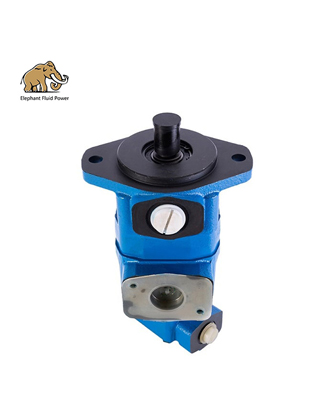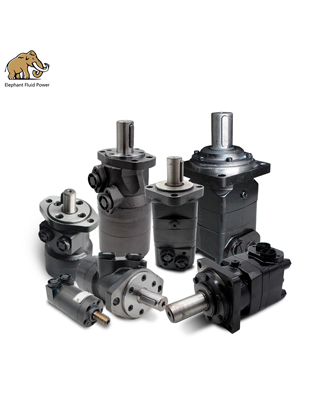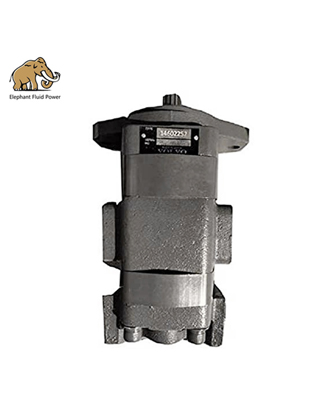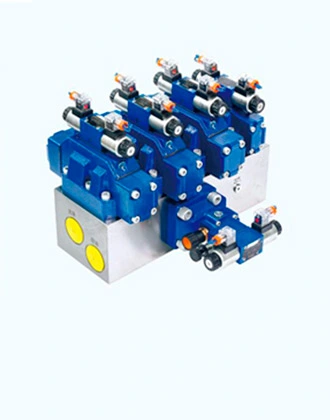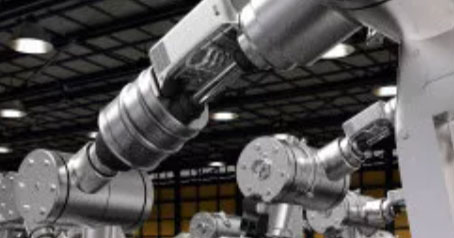1. The role of the hydram pump
The hydram pump is the heart of the hydraulic system. In a hydraulic system, there must be one or more pumps. The pump is the power element in the hydraulic transmission system. It is driven by the prime mover (motor or engine) to obtain mechanical energy from the output power, and converts it into the pressure energy of the fluid to provide pressure oil for the system, and then in the place where work is required, The fluid is converted into mechanical output by the actuator (hydraulic cylinder or motor).
Generally speaking, the pump is either a positive displacement pump or a non-positive displacement pump, and the pump in the hydraulic system belongs to the positive displacement pump. The so-called positive displacement pump refers to a pump that absorbs and discharges oil by relying on the change of the sealing volume. The existence of the sealing volume and the performance change of the sealing volume are the working principles of all positive displacement pumps.
2. The advantages of hydraulic pumps
The development of hydraulic pump is developing in the direction of high pressure and high speed, and at the same time, higher requirements are put forward for the leakage of hydraulic pump. There are two main forms of preventing hydraulic oil from leaking: static seal and dynamic seal, both of which are used to prevent or reduce the leakage of hydraulic oil in the hydraulic pump cavity to the outside of the pump cavity, and at the same time prevent external dust and foreign matter from entering the pump cavity.
Generally speaking, the static seal of the hydram pump may achieve the ideal situation of zero leakage through reasonable design, but for the dynamic seal, any relative displacement of the contact surface will create conditions for the leakage on the joint surface, so it is difficult to achieve Zero leakage. The external leakage of the hyd pump is an important indicator, and it is usually required that no leakage is allowed at the static seal, and the leakage index per unit time is given at the dynamic seal. As a form of dynamic seal, mechanical seal has the following advantages: low leakage, low material loss, reliable use; low friction power loss; long service life; wide range of use, suitable for low speed, high speed, low temperature, high temperature and high pressure.
Due to the high rotation speed of the input shaft of the high-speed hydraulic pump, the shaft diameter cannot be small due to the limitation of the transmission torque strength, etc., so the linear speed is very high, coupled with the high sealing pressure and high working temperature, the rotary oil seal can no longer meet the requirements, so it is a good solution to take a mechanical seal. A sealing device formed by relative rotation. This isolates the internal working fluid of the hydraulic pump from the outside. When the hydraulic pump is working, the moving ring rotates with the shaft, and the fixed ring is fixed in the end cover. Through the mutual friction of the mating surfaces of the movable and fixed rings, the sealing end face is formed to complete the dynamic sealing.
The rest of the auxiliary sealing is done by the sealing ring. Due to processing and installation, the sealing end face of the initial work will have a certain taper, and the existence of this taper will cause the seal to initially converge or diffuse. During use, the action of pressure and thermal deformation changes the shape of the sealing end face, thereby generating high contact stress on the sealing end face. The movable ring or fixed ring with better self-adaptive wear can reduce the contact stress, and the design and analysis of the seal of the shaft tail mechanism of the high-speed hydraulic pump can quickly rebuild the sealing surface to achieve the sealing function.
 French
French
 Portuguese
Portuguese
 Russian
Russian
 German
German
 Spanish
Spanish
 Japanese
Japanese
 Korean
Korean
 Irish
Irish
 Greek
Greek
 Turkish
Turkish
 Italian
Italian
 Danish
Danish
 Romanian
Romanian
 Indonesian
Indonesian
 Czech
Czech
 Afrikaans
Afrikaans
 Swedish
Swedish
 Polish
Polish
 Basque
Basque
 Catalan
Catalan
 Esperanto
Esperanto
 Hindi
Hindi
 Lao
Lao
 Albanian
Albanian
 Amharic
Amharic
 Armenian
Armenian
 Azerbaijani
Azerbaijani
 Belarusian
Belarusian
 Bengali
Bengali
 Bosnian
Bosnian
 Bulgarian
Bulgarian
 Cebuano
Cebuano
 Chichewa
Chichewa
 Corsican
Corsican
 Croatian
Croatian
 Dutch
Dutch
 Estonian
Estonian
 Filipino
Filipino
 Finnish
Finnish
 Frisian
Frisian
 Galician
Galician
 Georgian
Georgian
 Gujarati
Gujarati
 Haitian
Haitian
 Hausa
Hausa
 Hawaiian
Hawaiian
 Hebrew
Hebrew
 Hmong
Hmong
 Hungarian
Hungarian
 Icelandic
Icelandic
 Igbo
Igbo
 Javanese
Javanese
 Kannada
Kannada
 Kazakh
Kazakh
 Khmer
Khmer
 Kurdish
Kurdish
 Kyrgyz
Kyrgyz
 Latin
Latin
 Latvian
Latvian
 Lithuanian
Lithuanian
 Luxembourg
Luxembourg
 Macedoniar
Macedoniar
 Malagasy
Malagasy
 Malay
Malay
 Malayalam
Malayalam
 Maltese
Maltese
 Maori
Maori
 Marathi
Marathi
 Mongolian
Mongolian
 Burmese
Burmese
 Nepali
Nepali
 Norwegian
Norwegian
 Pashto
Pashto
 Persian
Persian
 Punjabi
Punjabi
 Serbian
Serbian
 Sesotho
Sesotho
 Sinhala
Sinhala
 Slovak
Slovak
 Slovenian
Slovenian
 Somali
Somali
 Samoan
Samoan
 Scots Gaelic
Scots Gaelic
 Shona
Shona
 Sindhi
Sindhi
 Sundanese
Sundanese
 Swahili
Swahili
 Tajik
Tajik
 Tamil
Tamil
 Telugu
Telugu
 Thai
Thai
 Ukrainian
Ukrainian
 Urdu
Urdu
 Uzbek
Uzbek
 Vietnamese
Vietnamese
 Welsh
Welsh
 Xhosa
Xhosa
 Yiddish
Yiddish
 Yoruba
Yoruba
 Zulu
Zulu

